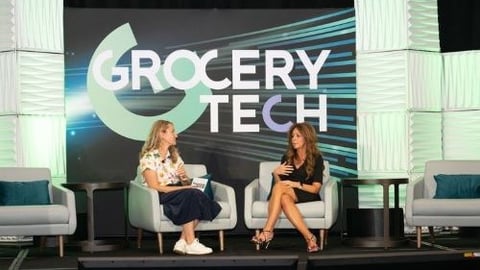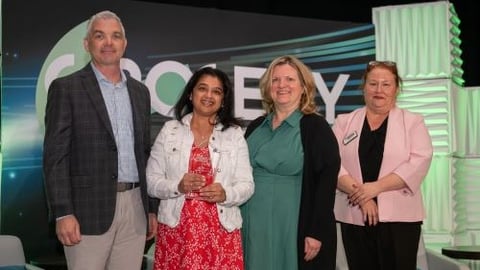How to Win Uncommitted Shoppers
It’s one thing to attract new shoppers. It’s quite another to keep them.
According to a new report from Upside, half of new grocery customers never return after their first month. That yawning gap between almost-shoppers and regular shoppers was explored in detail at Progressive Grocer’s GroceryTech event in Dallas.
Dr. Thomas Weinandy, senior research economist at Upside, underscored the high cost of overlooking shoppers during his session at GroceryTech. Based on two years of retailer and consumer data, Upside’s report – now available online – found that shoppers who often shop across different brands drive 72% of a grocer’s revenue. If they don’t return, that cuts directly into profitability.
[RELATED: Sam’s Club Exec Tells How to Transform Retail]
Despite real dollars left on the table, such missed opportunities may not be fully on the radar at the store level. Upside’s research indicates that 53% of retailers don’t believe a meaningful portion of their customers are uncommitted, despite data showing that 93% of customers fit that kind of profile. Moreover, while uncommitted shoppers contribute the majority of total revenue, they visit up to 80% less frequently than loyal customers.
On the flip side, capturing these frequently fickle shoppers can mean real money. Per Upside’s findings, earning just one additional visit per month from uncommitted customers could increase total revenue by as much as 209%, depending on the category.
How can grocers snare secondary and tertiary shoppers who visit only occasionally and leave little digital trace? Loyalty programs can help narrow that gap. Upside reports that loyalty and Upside together can boost retention by 60% at the cardholder level.
That said, it’s pivotal to not take enrolled rewards program members for granted. “Eighty percent of loyalty IDs are represented by this uncommitted behavior, with shoppers who are coming in less than weekly. Uncommitted shoppers are really throughout all loyalty programs and non-loyalty programs alike — just because a customer is in a loyalty program doesn't mean they're exhibiting loyal behavior,” Weinandy asserted. “In fact, most of the customers in a loyalty program are shopping at other stores as well.”
He continued, “If each loyalty ID that is exhibiting this uncommitted behavior comes in once a month more, then that's going to increase store revenue by 36% each month. Now, that's a theoretical concept, but if the idea that if there is this large swath of consumers who are not highly engaged, then it can be much more cost effective to reach these uncommitted customers than it is to be able to acquire a completely new customer.”
Weinandy also emphasized the importance of an omnichannel approach to loyalty. “There will be a 25% increase in grocery orders in the next decade from age demographics alone,” he pointed out, adding, “What we see is that digital grocery shoppers are 11 percentage points more likely to be regularly using one-time promotions, discounts, or coupons and similarly, are nine percentage points more likely to be using ongoing loyalty or membership programs.” Higher-income shoppers who frequently order digitally also look for discovery and value, he added.
Cashback offers are appealing to digital and in-store shoppers who can be enticed by loyalty programs. “Customers said that they were willing to try a different grocery store with a cashback offer of 9% but in reality the average cashback offer that consumers actually accept is 5%. That’s showing that, on average, there is a disconnect from consumers saying that they want a really high offer but are actually willing to accept an offer that's much lower,” Weinandy noted.
Personalization is integral to redemption and retention, including cashback offers like Upside’s offers that are added to loyalty programs. “If you have a loyalty program that's reaching customers at their own value proposition, then you're able to see that that's going to convince them to keep coming back again and again and again, “ Weinandy said.






